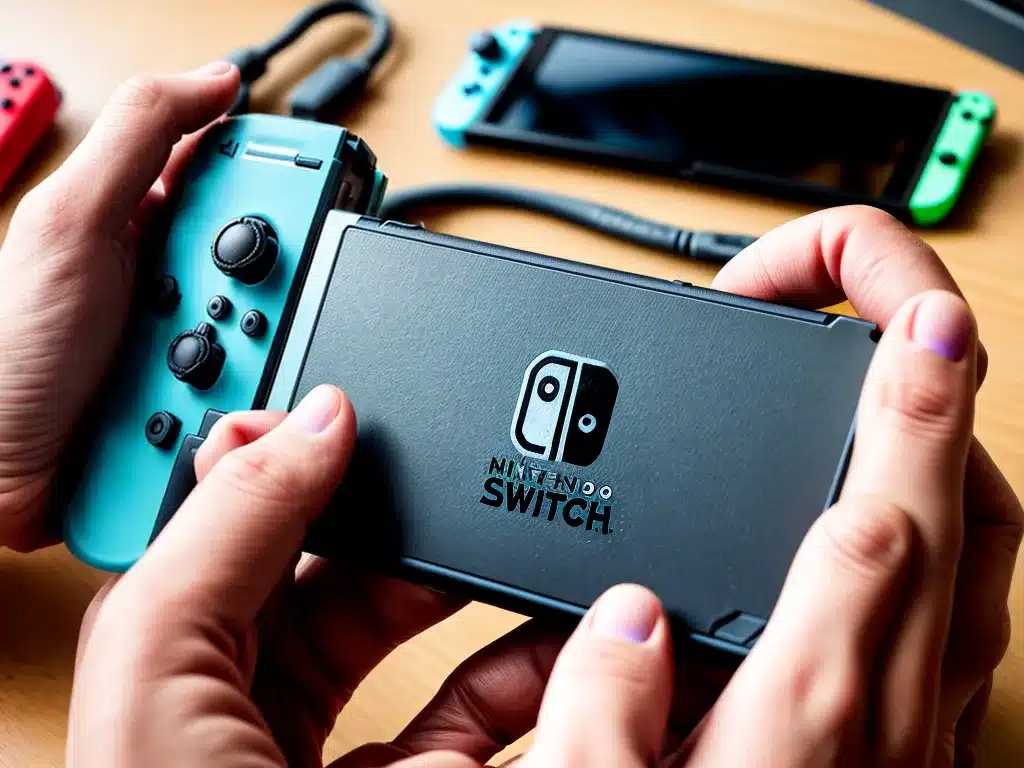
Introduction
The Nintendo Switch Joy-Con controllers are fantastic accessories that allow for versatile local multiplayer gaming right out of the box. However, they can occasionally suffer from syncing and connectivity issues that hamper the gaming experience. As a Nintendo Switch owner, I’ve dealt with these problems myself and discovered some reliable fixes that have worked wonders. In this article, I’ll provide an in-depth look at the most common Joy-Con syncing problems users face and the best troubleshooting steps to resolve them.
Common Joy-Con Syncing Problems
Here are some of the most prevalent sync and connectivity issues Joy-Con users report:
Joy-Con Not Responding or Connecting to the Console
This is likely the most common problem Switch owners face. The Joy-Con does not sync up with the console when you try connecting it. The LED lights may not light up when you press buttons on the controller. As a result, the Joy-Con does not respond to any inputs.
Joy-Con Connects But Input Is Erratic or Delayed
In some cases, the Joy-Con can establish a connection but behaves erratically. You may experience delayed response times, missed inputs, or random directions when trying to control a game. This suggests there is some interference or connectivity issue impacting the syncing.
Joy-Con Direction Inputs Are Incorrect
For example, you try moving left in a game but the character moves right instead. The directions registered by the Joy-Con are swapped or incorrect even though the connection seems fine otherwise.
Joy-Con Desyncs Frequently During Gameplay
A common annoyance is when the Joy-Con intermittently drops connection in the middle of games. It may reconnect on its own after some button presses. But the frequent desyncing can make games unplayable.
Troubleshooting Syncing and Connectivity Problems
Now let’s discuss the steps you can take to fix various Joy-Con syncing problems. Try these solutions in order – starting from the easiest ones – and check if the issue is resolved.
1. Restart the Console and Re-Pair the Controller
The simplest first troubleshooting step is to restart the Nintendo Switch by holding down the power button for a few seconds. Then try pairing the misbehaving Joy-Con again by sliding it onto the side rails or pressing the pairing button on the back (behind the LED strip).
Restarting clears out any software glitches that could prevent proper syncing. Re-pairing forces the console and controller to re-establish their wireless communication cleanly.
2. Update the Joy-Con and Console Firmware
Outdated firmware versions can also lead to poor wireless connectivity and syncing between the Joy-Cons and Switch.
- On the console, go to System Settings -> Controllers and Sensors -> Update Controllers.
- Also check System Settings -> System -> System Update to install the latest Switch firmware.
Updating to the newest firmware optimizes the syncing performance and fixes bugs. This simple step resolves Joy-Con issues for many users.
3. Try Re-Pairing the Controller While Closer to the Console
Wireless signals can get disrupted if there is too much distance between the paired devices. To rule out distance as an issue, re-pair the problematic Joy-Con while standing right in front of the Nintendo Switch console.
If that temporarily fixes the problem, it confirms interference is the culprit. You will then need to identify sources of signal interference that may be impacting the syncing.
4. Disable Other Nearby Wireless Devices
Bluetooth and wireless signals from other hardware in the vicinity could create interference and disrupt the Joy-Con connectivity. If you have wireless controllers, audio devices, smartphones, or peripherals around the Switch, switch them off or disconnect them temporarily.
If the JoyCon can then stay reliably synced during gameplay, you should avoid using those other wireless devices in close proximity to the Switch. Also, keep an eye out for any new devices with Bluetooth/Wi-Fi as the source of new interference.
5. Try Using the Controller in Handheld Mode
The form factor and playing style can also influence how well the Joy-Cons sync to the Switch tablet. The wireless transmission seems most stable when the JoyCons are slid onto the tablet in handheld mode.
If your sync issues only appear in TV mode with separated JoyCons, try using the controller while directly attached to the handheld screen instead. That may allow you to isolate if it is a simple pairing problem versus wireless interference.
6. Clean the Rail Contacts on the Joy-Con and Console
The physical connection between the JoyCon rails and console tablet can also be a source of syncing problems if it gets dirty. Use a toothpick dipped in rubbing alcohol to gently clean the metallic rail contacts both on the JoyCon and Switch tablet.
Check if debris or corrosion was causing faulty contacts that prevented accurate syncing and input registration. The rubbing alcohol will clear out any buildup.
7. Try Re-Pairing the Joy-Con After Resetting It
As a last resort, you can attempt to reset the JoyCon completely to factory settings and re-pair it afresh. Locate the small re-pairing button on the back of the controller hidden behind the LED strip.
Turn the console off. Then hold down the sync button for 10-15 seconds until the LEDs flash. This will reset the controller and force it to freshly connect with the console after a restart.
By methodically working through these JoyCon syncing fixes, you should be able to successfully troubleshoot and resolve any wireless connectivity issues you encounter. Start with simple steps like restarting, re-pairing, and updating firmware. Then look into wireless interference in your setup. Resetting the controller is the last resort if all else fails. With some diligent testing and troubleshooting, you can eliminate JoyCon syncing headaches and get back to enjoying great Switch gameplay.












